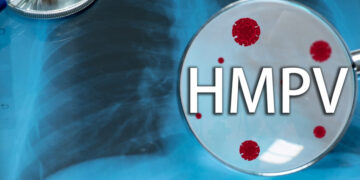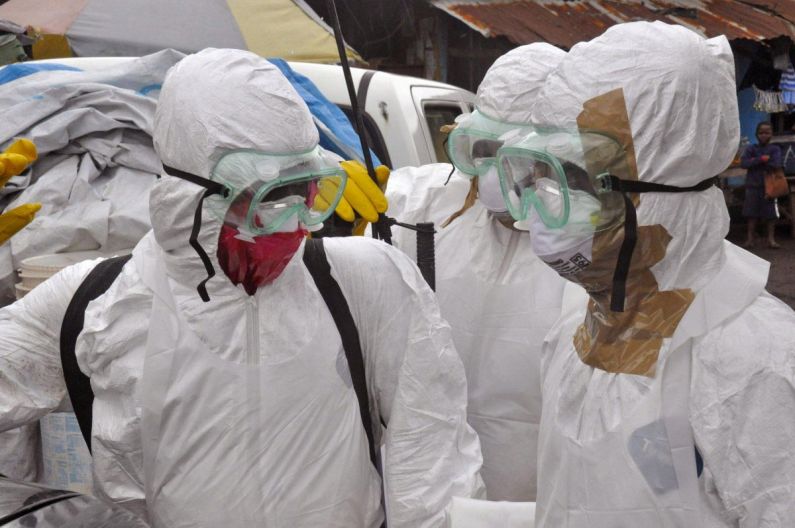I’ve been walking the earth for a half a century, so I’m sure I’ve picked up a bit along the way. I know the Gettysburg Address by heart. I can recite all the presidents.
More..
- Pr1vate Video Of The Most Endowed Babe In BBA L£aks (18**+)
- See the rapist caught in OAU after raping female students (Photo & Details)
- Exposed: Club in Port Harcourt where girls take off clo’th£s to entertain guys (Video)
- Meet the beautiful and popular Nollywood actress who doesn’t have s£x (Look)
- Oh My GoSh ! Guys you Need to See what Tiwa Savage Wore to Mavin’s Performance [ See Pics ]
- Nu d£ pics of Nicki Minaj after having $£x leaked by hackers (Look)
I can taste the difference between Diet Coke and Diet Pepsi, and I’m fairly certain I can tell you the starting lineup from the 1976 Cincinnati Reds. But if you ask me if I’m worried about Ebola, if our hospital is ready or if our nurses and staff are up to the challenge, chances are you will probably hear me say this:
“Hell if I know.”
I have been practicing emergency medicine for more than 20 years and I’ve seen close to 100,000 patients. I’ve written a few books, published some papers, lectured a bunch of times, pissed off about 10,000 soccer moms when I wrote an article telling them their kids weren’t playing the pros. I once even testified in front of a congressional sub-committee on hospital disaster preparedness. I’m still beating myself for at least not stealing a pen, but it was part of my duty as the physician director of mass casualty preparedness for our emergency department.
So you would think if anyone in the emergency department trenches would be versed as to how this Ebola scare will unfold, if it will spread, what to expect, how to diagnose, screen, protect and treat, then I suppose it would be me.
If an investigator for Joint Commissions or some other oversight agency, a member of the press or a committee trying to ensure CDC compliance were to pull me aside to spot check my Ebola acumen, they’d be satisfied with my answers and I’d leave them feeling like they had done due diligence as an administrator.
“Dr. Profeta, do we have enough protective stuff and does everyone know how to use it?”
“Yup.”
“Are the screening plans in place?”
“Yeah, ya betcha.”
“Is the staff versed in transmission and spread of Ebola?”
“Darn tooten.”
“Has everyone read all the CDC and hospital communiqués regarding Ebola?”
“Sure have.”
“Have you practiced the drills in the ER in case we have someone show up with a possible exposure?”
“More times than Lois Lerner has hit her hard drive with a hammer.”
But if they were to ask me if there are any other issues they should be aware of, I’ll just stare with round blank eyes and keep my mouth shut until the right question is asked; the question they will pretend does not exist.
“Dr. Profeta, will they – the staff, you, your partners – show up? “
“That, I don’t know.”
Some years ago when I first started in practice, a very large hospital in our area was having trouble getting patients rapidly admitted from the ER to the floors. This resulted in a tremendous backlog of patients and extreme ER overcrowding. This naturally increased patient wait times and directly impacted the health of those coming to the ER. So, naturally, the hospital system formed a committee and hired consultants. They looked at every single variable: time to laboratory, time to X-ray, nursing changeover, bed request time and on and on and on. Do you know what they found? The roadblock in the movement of patients through this major medical system was housekeeping. Think about that. Housekeepers, traditionally the lowest paid and least-skilled division of employment of the hospital, were responsible for the movement and throughput of patients more than any other factor.
If the rooms on the floor were not cleaned fast enough, then no patients could move from the ER to the floor, and no patients from the waiting room to the ER. ER wait times rose and patient care suffered. Housekeepers handcuffed the entire system, and not because they were lazy. The regulations, protocols and procedures put into place to clean a room are so extensive that rapid room turnover was next to impossible with the current staffing model. That stuck with me. What is the rate-limiting step in a mass casualty scenario or massive patient influx that would handcuff us? Where will all the preparedness collapse? What is the leaking O-ring? What am I afraid will fail?
As I alluded to a bit earlier, I appeared before members of Congress who were investigating Midwest medical centers and regional hospital preparedness for a mass casualty event. The focus was on our readiness should a major earthquake hit the Midwest. The congressmen wanted to know if we had the capacity to mobilize our staff; they asked what assistance we needed. Toward the end of the discussion, they asked each of us what we were most afraid of. The responses were typical answers you would give to a member of Congress if you were seeking money (not having enough resources, not enough congressional or governmental support, not having enough staff or equipment or infrastructure, etc.)
When they got to me, asking what I worried about, I simply said: “The flu.”
Now, flash forward. I wonder if what I really meant to say was “Ebola.”
When it comes to our ER and our ability to provide the best care during the worst extremes, I have no doubt we can mobilize our hospital to care for hundreds and hundreds of seriously injured patients. We have modeled our Emergency Department response to a mass-casualty incident in much the way Israeli hospitals have structured their programs. (As a side note, Israel is light years ahead of us in terms of all mass casualty – chemical, biological, environmental, mad-made – preparedness.) Specifically, we model our plan after Western Galilee hospital on the border of Israel and Lebanon. This is a large, major, modern-day medical center under constant threat from Hezbollah rockets from Lebanon. They train and drill with a level of involvement, passion and commitment that exceeds anything we can muster.
The staff at my hospital in Indianapolis, however, has bought into it and I truly believe that there is no ER in Indiana, and few in the Midwest, that have a better plan in place. We also gained a better understanding of the type of injuries we would see in each scenario. More specifically, we wanted to know from a pure number standpoint how many patients would have to go to the operating room the minute they hit the door, how many would need to be on ventilators and how many would need emergent life-saving intervention. Fortunately, and not so fortunately, the proliferation of research in this area has provided plenty of hard data well documented in the literature. Ultimately, all things being equal, the data seems to indicate a suicide type bomb loaded with ball bearings or other projectiles placed in a crowded area will result in the largest number of patients requiring immediate, emergent and life-saving intervention. While a disaster like a major earthquake will result in far more fatalities, far less people will require absolute immediate operative or life-saving intervention. All we really need to know is, what type of event, how many patients, and it’s pretty easy to calculate what to expect from an acuity standpoint. In the ER, it isn’t the total number of patients that concerns us, it’s the number we get that will die if not treated in minutes or a few hours. The rest we have no problem letting wait.
Ultimately, though, what I am getting at is that the trauma from a major incident like an earthquake or terrorist attack is very predictable. All you really need to know is the type of event and the numbers and you almost immediately have a pretty good idea of what to expect.
But a real bad flu?
There is no way you can prepare for it. The goal should be to protect your hospital from it.
We have seen influenza pandemics before, the most notable being the Spanish flu of 1918. Researchers estimate between 20 and 100 million peopled died from this strain of flu. What was even more concerning was the number of deaths that occurred in previously healthy people. Each year in the United States, about 30,000-40,000 deaths and 200,0000 hospitalizations can be attributed in part to influenza. Most deaths are in the elderly with pre-existing serious health problems. The Spanish flu of 1918 was different. It killed the healthy, able bodied. It unleashed an incredible degree of viral savagery with an infection rate of nearly 50 percent. It was a biological holocaust.
Thus my biggest fear has always been a strain of flu that is highly contagious with a high mortality rate. The Spanish-flu mortality rate of 1918 was 2 to 5 percent. Ebola has a 20 to 90 percent mortality rate, but it fortunately is not quite as contagious as Influenza. However, I still keep going back to flu and envisioning an epidemic of the Spanish type that will quickly fill all our inpatient beds, every ICU bed, every ventilator, every outpatient bed, every cot, gurney and chair in the ER and in all the waiting rooms. I’m afraid that a flu virus this aggressive will bring five dying flu victims to our ER each day and dozens more with a real possibility of dying.
This would occur on top of a department that is always operating at capacity and drowning in documentation and electronic medical record bureaucracy. After 30 days in our ER, nearly 150 people will have died, providers will be physically and mentally spent and morale will be at below-despair levels. Multiply it by 20 or so other hospitals in the area and now we are talking about 3,000 members of our community dead in only a single month. The obituary pages of the local paper will be thicker than the advertising section the day after Thanksgiving. Expand that number statewide and nationwide and the numbers become so immense they aren’t even real.
Now imagine a realistic scenario in which the flu vaccine only provides immunity to 50 percent of the recipients. That means that half of our ER staff who are seeing all these patients will have little protection, outside of gowns, masks, and gloves, against a virus that is spread primarily though coughing, sneezing and saliva. Simply put, some of us in the trenches in damn near every ER in America will almost certainly die. It could be me, it could be any one of my partners, colleagues and co-workers and it could be one of our children or a spouse who gets infected when one of us comes home thinking the headache and fatigue they are feeling is simply exhaustion from the workload of the day. Can you picture it?
Now imagine that huge numbers of hospital staff – from doctors to housekeepers, from food services to registration, from security and parking to transportation will decide not show up. They will call in sick or simply just say: “No, I’m not coming to work today.” In just a few days, human waste, debris, soiled linens, the sick, the dying and the bodies will pile up. We will be overwhelmed and unable to offer much in the way of assistance because the labor-intensive protocols that allow us to safely care for even one patient are just too exhausting. These procedures are barely repeatable more than once or twice of day, and fraught with so many steps and potential for mistake that it becomes too physically and emotionally taxing for the staff to do … so they simply wont show up.
And I am not sure I will, either.
I love emergency medicine. I love helping people and saving lives and I think I’m pretty good at it, but I am also a person and I have a wife and three children that I love and want to see grow up. I also am keenly aware that not a damn thing I do will have any real impact on the survivability of a patient with either the Spanish flu or Ebola. Fluids, rest and prayer is about all there is to offer. There is an old adage that says a hospital is no place for a sick person. I think whoever first said that had Spanish flu and Ebola in mind.
So we drill and we prepare and we post placards and do screening but no one is asking why in the hell are they coming to us in the first place? Fluids and rest can be provided anywhere: an empty warehouse or a huge tent in the middle of farmland. Why would we not just take the care to them in the form of special traveling Ebola-mobiles that triage and treat the patients at home? Why can we deliver the mail, pickup the garbage and recyclables at damn near every house in America, but we can’t pull up a retrofitted UPS van, drop off a mid-level provider in a hazmat gown, let them do an assessment, draw some blood, drop off cans of rehydrating formula to their doors, clean linen, biohazard bags, gowns and gloves for family members, slap a warning sticker on the front door, tell them you will stop by tomorrow and move on to some other location? I know I sound crass, perhaps like I don’t really have sympathy for these very ill patients. This could not be further from the truth. I’m just kind of angry. I know there is a better way than risking the infrastructure of a medical center for the sake of a few patients that will either do OK at home with simple supportive care or die no matter what care I provide. We’ve had years to prepare for this, we’ve hung all our hopes on a vaccine and not nearly enough thought on containment should a vaccine fail.
Today’s Ebola is tomorrow’s Spanish flu. We’ve had nearly a hundred years to get ready and the best we can come up with is plastic suits, double gloves, respirators, and masks. The battleground of this problem can’t be in the hospital. It is unwinnable in our emergency rooms.
I think I might just call in sick.
Dr. Louis M. Profeta is an emergency physician practicing in Indianapolis. He is the author of the critically acclaimed book, The Patient in Room Nine Says He’s God. This article is culled from LinkedIn.
–Louis Profeta
The opinions expressed in this article are solely those of the author
CLICK HERE to follow us on Google+ so as to get updates on published posts & videos
TOP POSTS YESTERDAY
- Exposed: How Bill Cosby took advantage over a teenager, raped her and many others (Look)
- Check out 8 Deep Penetrat1on Pos1tions To Get Her Moa’n1ng
- Sea S£x Lands Couple In Hospital As Man’s Organ Gets $tuck In Woman – You Really Need To See This!
- Another Leaked Amber Rose Na ‘k£d Photo Goes Viral Again! [Look] Rated 18+
- BBA HOTSHOTS ! Watch Shower Hour of Endowed Butterphly , Ellah, Trezagah, M’am Bea,Macky2 [VIDEO]
- #BBAHotshots: Shower Hour Day 18 With Sheillah – Too Much B00ty!! [Download Video] Rated 18+
- BBA HOTSHOTS : Mira & Luis caught “doing things” – [Video]
- Model Who Twerks Her B00bs Says She Has Received Death Threats [Photos & Video]
- Ladies, That Your Sugar Daddy Doesn’t Love You; SEE Why (MUST SEE)
- BBA HOTSHOTS Shower Hour: Lilian, Sheillah, Samantha doing things (Video)
- Must See! Ghanaian Actress Moesha Boduong Wants You To See Her Inner Thing [Look]
- Photos: Waje goes completely nu ‘d£ for these pics (Look)
- Gov. Amaechi reacts to presidency statement, comes for FG – See what he said!
- It’s here!! Download Nfana Ibaga by 2Face (Official Video)
- PHOTOS & VIDEO: BBA Hotshots Ladies in the Bath
- OMG!! Secondary school girl caught showing her BF her stuffs in class? (See Photo)
- Top Post Today: Guys!!! 10 Things You Can Actually Do To Increase Your P£nis Size [Must Read]
- Nu ‘d£ picture of Malawi TV reporter surfaces online
- See the first housemates to have S£x in BBA Hotshots – Luis and Mira!
- Aww…Date Night! Peter and Lola Okoye Step Out In Matching Outfits [Photos]
- Things You Must Know: Five Big Lies About Marriage
- Explicit! Maheeda Shares Full Version Of Her Nu ‘d£ Pics [Look] 18+


























![What Scares Me Even More Than Ebola – An ER Doctor Writes [Must Read]](https://theinfong.com/wp-content/uploads/2014/10/Virus.jpg)










Discussion about this post